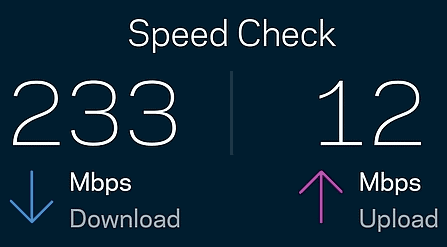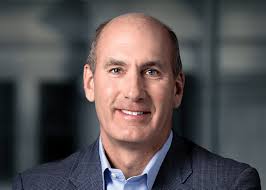 Spectrum internet customers in parts of Central Florida and South Texas are getting twice the download speed they used to receive thanks to a series of quiet service upgrades still in progress.
Spectrum internet customers in parts of Central Florida and South Texas are getting twice the download speed they used to receive thanks to a series of quiet service upgrades still in progress.
Customers in parts of suburban Orlando, including Seminole County, first noticed the speed upgrade in April in towns like Lake Mary. Parts of Kissimmee saw a service upgrade earlier this month. Some neighborhoods in Orlando also began reporting speed upgrades as of mid-May. Some parts of Pasco County, north of Tampa, also received a 200 Mbps upgrade, particularly in planned communities.
Charter Communications is gradually upgrading capacity in the area, formerly served by Bright House Networks. Spectrum traditionally does not announce speed upgrades until an entire service area is complete, which will likely happen in parts of Florida and Texas by early this summer.
 In South Texas, San Benito is one of the communities between Brownsville and McAllen seeing Spectrum’s usual download speed doubled from 100 to 200 Mbps.
In South Texas, San Benito is one of the communities between Brownsville and McAllen seeing Spectrum’s usual download speed doubled from 100 to 200 Mbps.
The speed upgrades come without any additional charges and usually appear automatically. Spectrum has been slowly upgrading its national service footprint to offer the new, higher-speed 200 Mbps Standard service tier. For more than two years, customers in many AT&T landline areas in the midwest and south have had 200/10 Mbps service, designed to help keep the cable company competitive with AT&T’s fiber offering. But service remains stubbornly fixed at 100/10 Mbps in just under half of Spectrum’s service area, particularly in the Northeast, mid-Atlantic, and West regions.
Stop the Cap! expects Spectrum to upgrade all of its service areas to provide 200/10 Mbps service. It remains uncertain exactly when that will happen, however.


 Subscribe
Subscribe One of America’s internet service providers managed to achieve a customer satisfaction score of 94%, an unprecedented vote of approval from consumers that typically loathe their cable or phone company.
One of America’s internet service providers managed to achieve a customer satisfaction score of 94%, an unprecedented vote of approval from consumers that typically loathe their cable or phone company. FairlawnGig offers two plans to residents: 300/300 Mbps service for $55 a month or 1,000/1,000 Mbps service for $75. Landline phone service is an extra $25 a month, and the municipal provider has pointed its customers to online cable TV alternatives like Hulu and YouTube TV for television service. Incumbent cable and phone companies usually respond to this kind of competition with cut-rate promotions to keep the customers they have and lure others back. Spectrum has countered with promotions offering 400 Mbps internet for as little as $30/mo for two years. Despite the potential savings, most people in Fairlawn won’t go back to Spectrum regardless of the price. FairlawnGig’s loyalty score is 80, with 85% of those not only sticking with FairlawnGig but also actively recommending it to others.
FairlawnGig offers two plans to residents: 300/300 Mbps service for $55 a month or 1,000/1,000 Mbps service for $75. Landline phone service is an extra $25 a month, and the municipal provider has pointed its customers to online cable TV alternatives like Hulu and YouTube TV for television service. Incumbent cable and phone companies usually respond to this kind of competition with cut-rate promotions to keep the customers they have and lure others back. Spectrum has countered with promotions offering 400 Mbps internet for as little as $30/mo for two years. Despite the potential savings, most people in Fairlawn won’t go back to Spectrum regardless of the price. FairlawnGig’s loyalty score is 80, with 85% of those not only sticking with FairlawnGig but also actively recommending it to others. Windstream Communications lost between $3.2-5.1 million in lost profits because of
Windstream Communications lost between $3.2-5.1 million in lost profits because of 
 With the merger of CBS and Viacom now complete, the combined company is preparing to overhaul its subscription streaming service CBS All Access with a rebranding and a relaunch this summer.
With the merger of CBS and Viacom now complete, the combined company is preparing to overhaul its subscription streaming service CBS All Access with a rebranding and a relaunch this summer.
 Stankey’s predecessor, Randall Stephenson, will exit as AT&T’s CEO in July. He leaves a much larger conglomerate than what he started with. AT&T has diversified from its telephone and wireless portfolio with several major acquisitions, including DirecTV — the satellite TV service, and Time Warner (Entertainment), a Hollywood studio and entertainment giant. The result is a company loaded with debt and a revolt by activist investors that question the wisdom of creating the 2010s version of AOL-Time Warner.
Stankey’s predecessor, Randall Stephenson, will exit as AT&T’s CEO in July. He leaves a much larger conglomerate than what he started with. AT&T has diversified from its telephone and wireless portfolio with several major acquisitions, including DirecTV — the satellite TV service, and Time Warner (Entertainment), a Hollywood studio and entertainment giant. The result is a company loaded with debt and a revolt by activist investors that question the wisdom of creating the 2010s version of AOL-Time Warner.